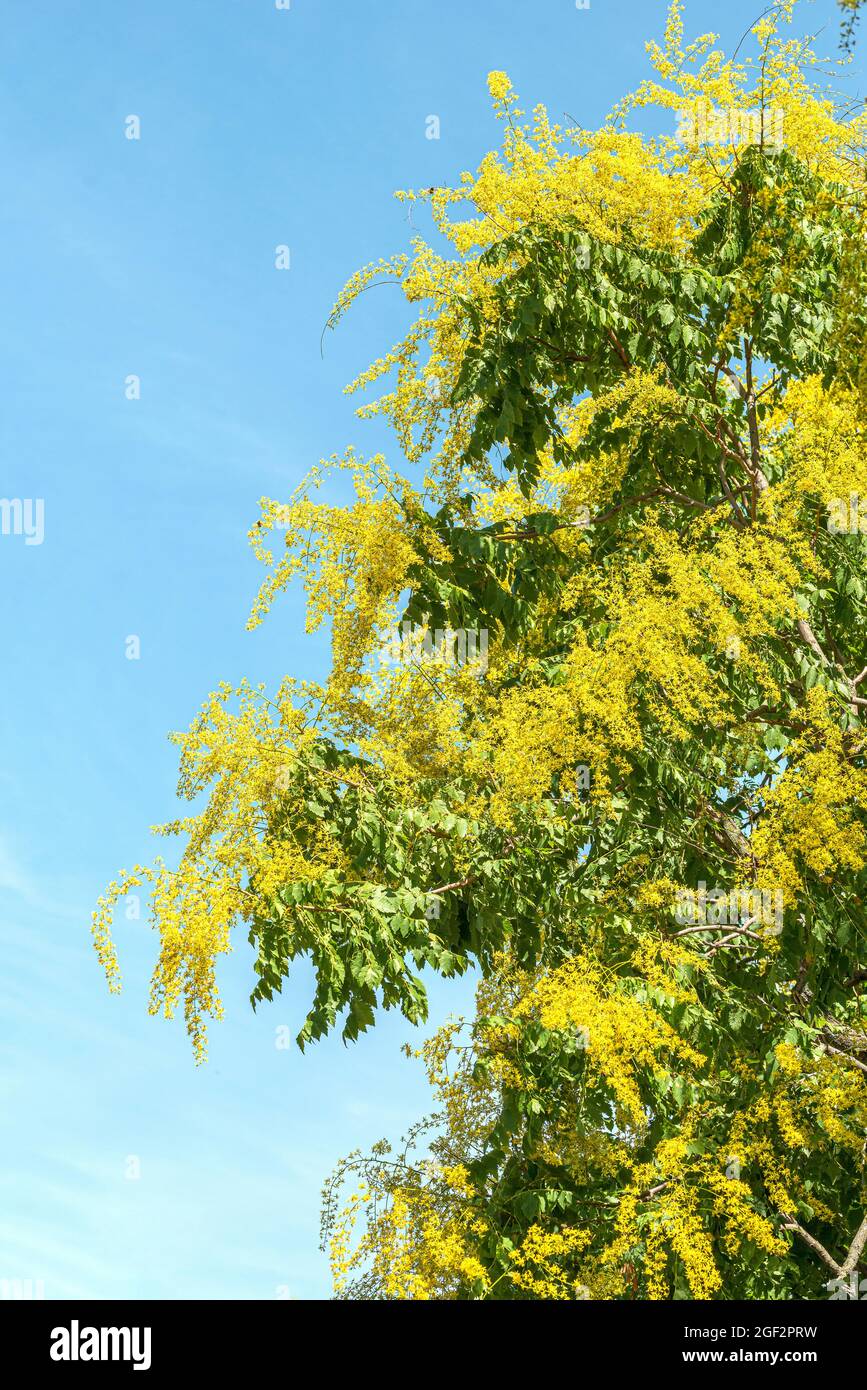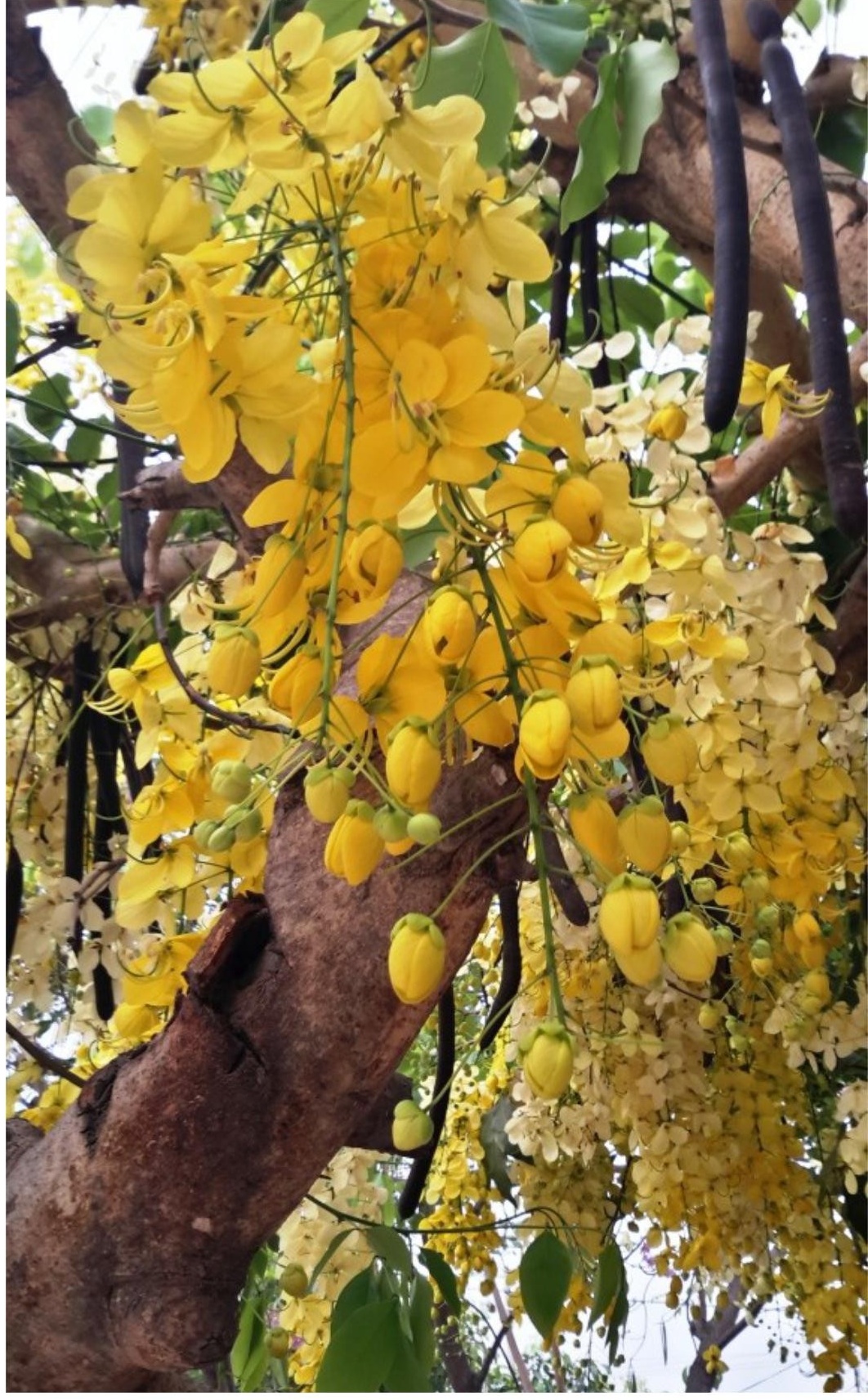Unveiling The Golden Rain Tree: A Guide To Growing This Stunning Yet Sprawling Plant
Have you ever seen a tree that absolutely stops traffic with its stunning, bright yellow blooms? That, my friend, is quite possibly the golden rain tree, also known as Koelreuteria paniculata. This amazing deciduous tree, originally from Asia, really puts on a show, especially in summer, when it's covered in armloads of lemon yellow blossoms that just reach out above its foliage. It's a glorious addition to any landscape, you know, just truly eye-catching.
But there's more to this beautiful plant than just its showy flowers. The golden rain tree, with its pinnate leaves and interesting inflated seed pods, is cultivated as an ornamental plant all over the world, and for good reason. From its emerging leaves that show off bronze, pinkish, or even purplish hues, to its dull yellow autumn leaves, it offers quite a visual journey through the seasons. It's a rather versatile tree, actually, adapting to various settings and offering beauty across different times of the year.
So, whether you're thinking about adding one to your yard or just curious about this versatile tree, there's a lot to discover. We'll explore its common names, how it looks, different types, what it's used for, and some things you might want to watch out for. Basically, we'll find out how to grow, care for, propagate, and prune this tree, as well as its good points, its not-so-good points, and its potential to spread where it isn't wanted. Here’s what you should know prior to adding the golden rain tree to your yard or garden area, you know, just to be fully prepared.
Table of Contents
- What is the Golden Rain Tree?
- The Golden Rain Tree's Many Faces: Description and Cultivars
- Bringing the Golden Rain Tree Home: Growing and Care
- Benefits and Uses: Why Choose This Tree?
- Understanding the Downsides: Potential Problems and Invasive Nature
- Frequently Asked Questions About the Golden Rain Tree
What is the Golden Rain Tree?
The golden rain tree, a plant with a rather catchy name, is officially known as Koelreuteria paniculata. It's also sometimes called the panicled golden raintree, which just sounds a bit fancy, doesn't it? This particular tree is a deciduous type, meaning it sheds its leaves each year, typically as autumn arrives. It’s not an evergreen, you know, so it will change with the seasons.
This beautiful tree actually has its roots in Asia, where it originated. From there, it has spread across the globe, becoming a popular ornamental plant in many countries. It’s a sprawling shade tree, really, offering a nice canopy when it matures. The common name, "golden rain tree," is pretty apt, as it comes from those truly showy yellow flowers that bloom in clusters, reaching out above its foliage like a golden cascade. It’s a sight that can make you stop and look, honestly.
People love this tree for its visual appeal throughout the year. It's cultivated worldwide, you see, because it brings so much beauty to gardens and public spaces. It’s a very striking plant, especially when it's in full bloom. The way its bright yellow flowers stand out against its green leaves is quite something, and it’s a big reason why it's chosen for landscapes everywhere, you know, just for that pop of color.
The Golden Rain Tree's Many Faces: Description and Cultivars
This tree, actually, has a pretty distinct look that changes with the seasons, making it interesting all year round. Its leaves are pinnate, which means they have several smaller leaflets arranged along a central stem, giving them a feathery appearance. When new leaves first emerge in spring, they can be bronze, pinkish, or even a bit purplish, offering a lovely soft color before turning green for the summer. This early color is quite a treat, you know, a nice surprise.
The most famous feature, of course, is the vibrant yellow flowers. These showy blooms appear in clusters during the summer, creating that "golden rain" effect. They are quite large and stand out wonderfully above the tree's foliage, truly making a statement. This is why it is always best to appreciate its beauty during its peak bloom time, as it really does stop traffic, as a matter of fact.
After the flowers fade, they give way to these really interesting seed pods. These pods start out a fresh lime green, almost like little lanterns hanging from the branches. As autumn arrives, they gradually turn a rich brown. These inflated seed pods are quite unique and are a key identification feature for the tree, you know, making it recognizable even without its flowers. It's officially fall in Florida, for instance, and *gasp* the notorious golden rain trees have finally set fruit, which is quite a sight.
As the year progresses into late autumn, the green leaves that graced the tree throughout summer turn a dull yellow before they drop. This autumnal display, while not as vibrant as some maples, still adds a nice touch of warmth to the landscape. We're talking about a tree that can get quite tall, too, reaching heights that make it a perfect choice for today’s smaller landscape designs where vertical interest is desired, rather than a wide, sprawling canopy.
While the provided text doesn't detail specific named cultivars, the general description highlights its ornamental value. Its unique leaf emergence, stunning summer flowers, and interesting fall pods make it a popular choice for gardens around the world. It's a plant that offers something visually appealing in every season, really, from its emerging bronze leaves to its brown seed pods in the fall.
Bringing the Golden Rain Tree Home: Growing and Care
So, if you're thinking about adding this beautiful tree to your yard or garden, there are a few things to keep in mind to help it thrive. It's a rather hardy plant, actually, which makes it a good option for many different climates. Find out about its hardiness in your specific area, as this will help you understand how well it will cope with local weather conditions, you know, before you commit to planting.
Finding the Right Spot: Soil, Light, and Water
This tree is pretty adaptable when it comes to where it grows, which is quite helpful for gardeners. It grows in a wide range of soils, even those with a high pH, which can sometimes be a challenge for other plants. This means you likely won't need to do a lot of soil amendment, which is a real bonus, honestly. The ideal soil should be well-draining, but it's not overly fussy, really, about the exact type of soil.
For light, the golden rain tree generally prefers full sun. This means a spot where it gets at least six hours of direct sunlight each day. Plenty of sun helps it produce all those amazing, showy yellow flowers that give it its name. It truly needs that sunlight to perform its best, you see, to create that traffic-stopping display.
As for water, the golden rain tree tolerates dryness quite well once it's established. This means it's pretty drought-tolerant, so you won't need to water it constantly, which is a nice feature for busy gardeners. However, while it tolerates dryness, consistent watering during its first year or two will help it establish a strong root system, which is pretty important for its long-term health.
Planting Your Tree
When it comes to transplanting, the golden rain tree is generally quite forgiving, which is good news if you need to move it or are planting a young tree. You'll want to find out about its hardiness in your specific area, but it's known to be pretty tough and can handle being moved with care. Here’s what you should know prior to adding the golden rain tree to your yard or garden area, you know, just to be fully prepared for the planting process.
Make sure the spot you pick has enough room for it to grow tall. While it's a good choice for smaller landscapes because of its vertical growth, it still needs space to spread its roots and develop properly. This versatile tree is the perfect addition to many landscape applications, but choosing the right initial spot is key for its success, honestly. It can get quite tall, so plan accordingly.
Feeding and Watering Your Golden Rain Tree
While the golden rain tree tolerates dryness once mature, regular watering when it's young will help it establish a strong root system. This is crucial for any new tree, as it helps it become self-sufficient. You want to make sure the soil is consistently moist, but not waterlogged, especially in its first few growing seasons, you know, to give it a good start.
Fertilizer requirements are generally low for this tree, honestly, which simplifies its care quite a bit. It's not a heavy feeder, meaning it doesn't need a lot of extra nutrients to thrive. This is a plus for easy care and means you won't have to worry about complex feeding schedules, which is pretty convenient, as a matter of fact. Just a basic, balanced fertilizer in spring if your soil is very poor might be enough.
Pruning for Health and Shape
Pruning helps maintain its shape and health, and it's a good practice for the golden rain tree. You can learn how to prune this tree to encourage good structure and remove any dead or crossing branches. Even though it has a reputation for being a bit weak-wooded, proper pruning can help mitigate that, you know, by creating a stronger framework. This is important for its long-term stability.
Regular pruning also helps keep the tree looking its best and can encourage more vigorous growth. It's a relatively easy tree to care for in terms of pruning, but knowing the right techniques will ensure it remains a beautiful and healthy addition to your yard. Find out how to grow, care, propagate, and prune this tree, as well as its benefits, drawbacks, and invasive potential, to get a full picture of its needs, honestly.
Spreading the Beauty: Propagation
You can propagate this tree, too, if you're interested in growing more golden rain trees. Find out how to propagate this tree, as it's something many gardeners enjoy doing. It's a rather interesting process, actually, and can be quite rewarding. The tree produces many seeds, which is a key part of its ability to spread, and these seeds can be used for propagation.
The short germination time of only a few days means that seeds can sprout quickly under the right conditions. This rapid germination
- Gabe Brown Sister Wives
- Outback Dinner Menu With Prices And Pictures
- Benny And Joon
- Trump Shedeur Sanders
- Mira004 Leaks

How Big Does A Golden Rain Tree Get at William Biscoe blog
Golden Rain Tree Rhs at Tawny Dunn blog

Golden Rain Tree